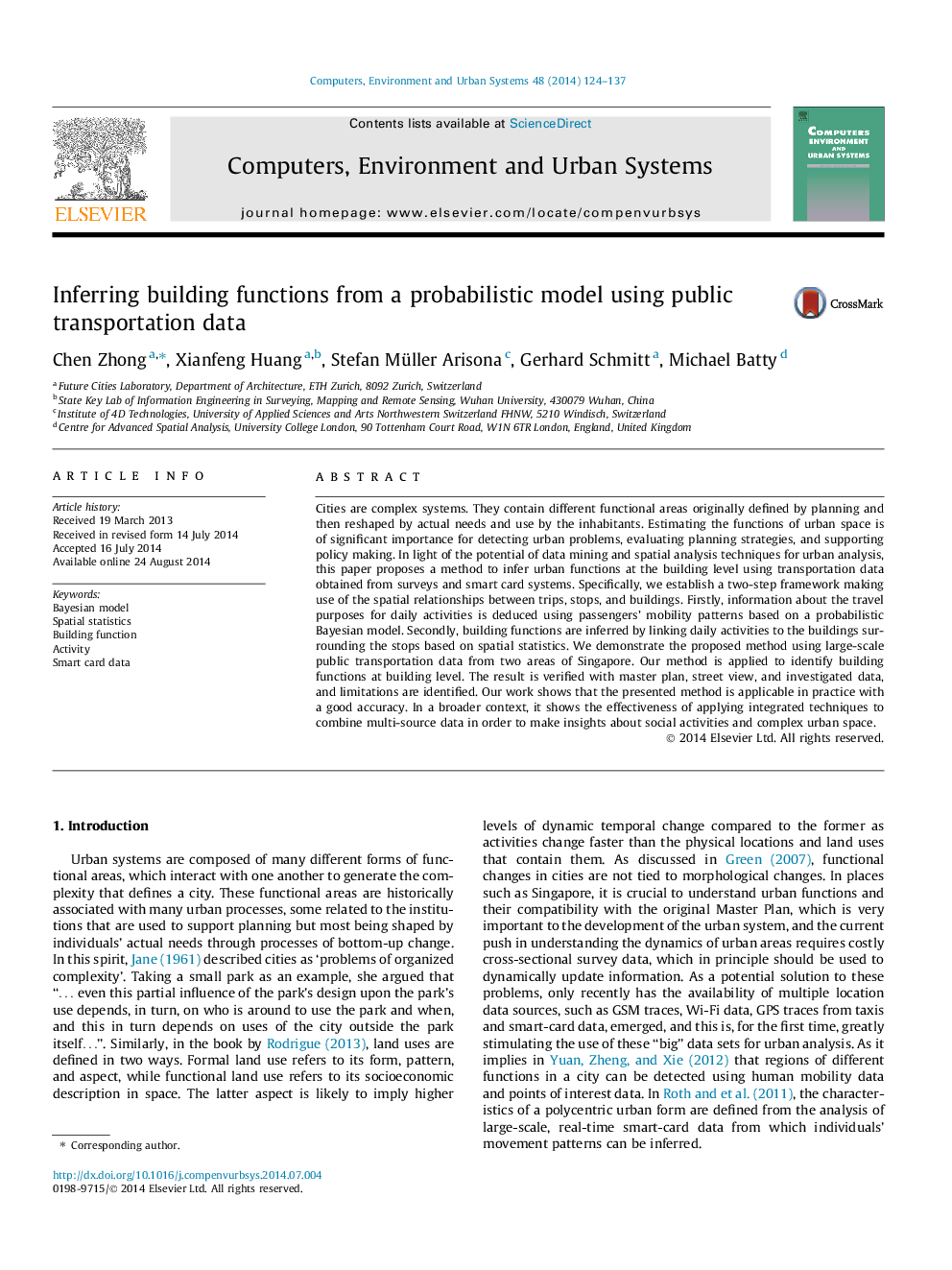| Article ID | Journal | Published Year | Pages | File Type |
|---|---|---|---|---|
| 506348 | Computers, Environment and Urban Systems | 2014 | 14 Pages |
•We make insights into the use of urban space through mining transportation data.•A probabilistic model is applied to infer travel purposes, and thus function of buildings around trip destinations.•A framework for inferring building functions is designed by making use of multi-source data.•The proposed method is demonstrated and verified with real data collected in Singapore.
Cities are complex systems. They contain different functional areas originally defined by planning and then reshaped by actual needs and use by the inhabitants. Estimating the functions of urban space is of significant importance for detecting urban problems, evaluating planning strategies, and supporting policy making. In light of the potential of data mining and spatial analysis techniques for urban analysis, this paper proposes a method to infer urban functions at the building level using transportation data obtained from surveys and smart card systems. Specifically, we establish a two-step framework making use of the spatial relationships between trips, stops, and buildings. Firstly, information about the travel purposes for daily activities is deduced using passengers’ mobility patterns based on a probabilistic Bayesian model. Secondly, building functions are inferred by linking daily activities to the buildings surrounding the stops based on spatial statistics. We demonstrate the proposed method using large-scale public transportation data from two areas of Singapore. Our method is applied to identify building functions at building level. The result is verified with master plan, street view, and investigated data, and limitations are identified. Our work shows that the presented method is applicable in practice with a good accuracy. In a broader context, it shows the effectiveness of applying integrated techniques to combine multi-source data in order to make insights about social activities and complex urban space.
